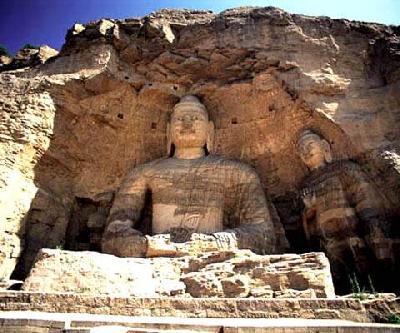| Travel in China > Cultural Sites > Cities |
|
|
Datong
Datong, with a long history and located at a strategic place, was once a capital of the country in ancient times, the capital city of two non-Han Chinese dynasties and a town of military importance in four dynasties. Datong enjoys convenient transportation and communications, and boasts rich mineral resources and solid industrial foundation. It is now an energy and heavy chemical base in China, and is especially famous for coal production, which wins it the name of the capital of coal.
The finest of the city's marvelous natural sites is a magnificent series of Yungang Grottoes built in the Northern Wei Dynasty (386-534), just west of the city. Yungang Grottoes, Dunhuang Mogao Grottoes and Luoyang Grottoes are called China's three major grottoes, which are of very high artistic value.
The most beautiful landscape in Datong is Hengshan, one of the five holy mountains of Taoism. At the foot of Hengshan Mountain, there is the almost unbelievable Midair Temple, which lies against cliffs and stays high up in the air, and is acclaimed as the peak of perfection. |
||||
All rights reserved. Reproduction of text for non-commercial purposes is permitted provided that both the source and author are acknowledged and a notifying email is sent to us. |
||||
 |
